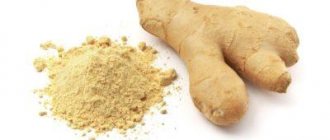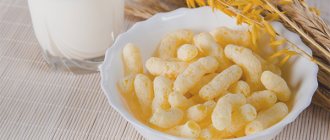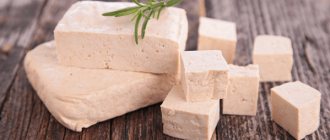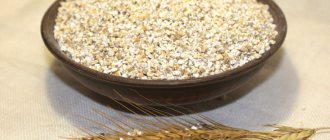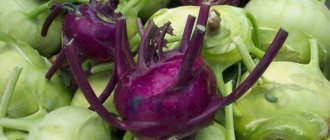Figs are ideal for a snack, perfectly satisfy hunger and can be used to prepare many delicious dishes. Find out their calorie content, get 5 dietary recipes that will make losing weight much more enjoyable!
Author: Kristina Lobanovskaya, doctor, practicing nutritionist Article updated: 11/09/2020
Ask a Question
Figs are the fruit of one of the most amazing plants called the fig tree, fig tree, or fig tree. According to historians, this fruit was Cleopatra’s favorite delicacy, which is not at all surprising, because the calorie content of raw figs is only 50 kcal/100 g and an average of 15 kcal/1 piece. Nowadays, fig tree fruits are rarely consumed fresh, but rather dried or dried, due to their short shelf life. In a dry, dark place they dry out quickly, and after a short stay in the sun they begin to ferment, which explains another common name for the plant - wineberry. It should be taken into account that after dehydration (dehydration as a result of drying), the energy value of these fruits increases almost 5 times.
Beneficial properties of dried figs for the body
Fig is a berry with a delicate, slightly creamy substance, somewhat reminiscent of jelly. The taste of the fruit is not bright, refreshing and not at all cloying, although the fruit contains enough sucrose. Fresh figs grow in high mountain countries - Armenia, Azerbaijan, Abkhazia, where the season begins in August and ends in September. But fresh fruits are practically not stored and are very difficult to transport. Drying is a way to preserve these berries and preserve all the benefits of dried figs for the long winter months.

There are a lot of beneficial properties in berries:
- an infusion of milk with figs fights coughs no worse than many syrups of industrial origin;
- for colds, the benefits of figs are invaluable: it is a powerful diaphoretic, antipyretic - if in Russia they give tea with raspberries for this, then in Armenia they always drink dried berries, which are boiled for a long time in milk or a small amount of water (adults are given wine in which the figs were boiled and stewed). figs);
- this is a natural catalyst for any digestive problems: bloating, gastritis recede even at the acute stage if you eat dried berries in their dried form, washed down with water;
- dried fig fruits are always indicated for any form of anemia - they stimulate the production of red blood cells, revitalizing and rejuvenating the blood, changing its composition for the better;
- due to the high fiber content, it normalizes intestinal function;
- increases intelligence, because beneficial microelements stimulate brain activity, improve performance, relieving fatigue and irritability;
- improves heart function - dried berries contain potassium necessary for the cardiovascular system, reducing the risk of heart attacks and strokes;
- dried fruits are an excellent natural remedy against stress, they relax the nervous system, no worse than any sedative;
- berries have the ability to improve metabolism, causing weight loss many times faster;
- remove waste, poisons, and toxins from the body, so in case of any poisoning, compote is a real salvation, and also very tasty.
Dishes
Most often, fig tree fruits are used for snacking as an independent dish or in mixtures with nuts and other dried fruits, as well as in combination with natural dry wines, high-quality cheeses and dry-cured meats. They are used to prepare chocolate-covered candies, make preserves and jams, add them to baked goods, and use them as a base for various drinks - compotes, homemade wines and liqueurs. In any case, it must be taken into account that when using fresh figs, the calorie content of the finished dish will be significantly lower than when adding dried or dried fruits to it.
In Apple pie order
Wash and steam 12 pieces of dry fig tree fruits in boiling water for 2 minutes. Then place in a colander and leave to drain. Grind ½ cup of walnut kernels in a blender, add 2 tsp. honey Each berry is blotted with a napkin and a small transverse incision is made on it, inside which the nut-honey mass rolled into balls is placed. Melt a 100-gram chocolate bar in a water bath, dip the prepared dried fruits in it, place it on a cutting board and sprinkle with chopped walnuts.

The calorie content of figs in chocolate prepared according to this recipe is 432 kcal/100 g. Despite the high indicator, these will be very healthy calories, including valuable substances not only from the fig tree, but also from honey, walnuts, and chocolate. This product can be consumed for breakfast or as a healthy snack in the morning, as well as for athletes after training to fill the “carbohydrate window”.
With prunes
Grind 10 pcs in a blender or meat grinder. prunes and 3 walnut kernels. Mix with 1 tbsp. l. sour cream and 1 tbsp. l. granulated sugar. This amount of filling is designed for 10 pieces of fresh figs. On each of them, 2 cuts are made crosswise on top and opened a little. The filling is placed in the middle and you get another delicious vitamin dessert that is ready to eat.
In this recipe, the calorie content of figs with prunes will be 153 kcal/100 g. But if necessary, you can remove sugar from it, since the dried fruits used are quite sweet in themselves. This will reduce the total calorie content of the product to 100 kcal/100 g.
With milk
Cut 100 g of fresh fig tree into small pieces. Pour 1 cup of boiling water and leave for 4 hours. Add 1 glass of warm boiled milk and 1 tsp. honey With a very low calorie content (40 kcal/100 g), figs with milk are a very healthy dessert that is completely absorbed by the body, as well as an excellent anti-cold and mild laxative.

With cheese
Halves of one fresh fig are fried in butter, sprinkled with a little granulated sugar. Separately mix 1 tbsp. l. olive oil with 1 tsp. lime juice and ½ tsp. honey Place 90 g of Adyghe cheese, pre-cut into slices, on a plate. Pour over the sauce, sprinkle with grated pine nuts, top with fried halves of fruit, and then chopped spinach. The calorie content of this dish is 273 kcal/100 g. It goes well with dry wine and can be used for a festive dinner.
Jam
To prepare classic fig jam, take the same amount of fig tree and sugar (usually 1 kg each), as well as a little water (2 tablespoons for the indicated weight). Before cooking, remove the tails from thoroughly washed fruits. If desired, remove the skin and cut into pieces or leave whole. Whole fruits are pierced with a toothpick so that they cook inside and do not burst. The prepared raw materials are sprinkled with granulated sugar and left for 20 minutes.

When the fig tree releases juice, add water, place on low heat, and heat with constant stirring until it boils and the sugar dissolves. After this, boil the jam for another 5 minutes. The foam that forms during cooking is constantly removed. Then remove the mixture from the heat and leave until it cools completely. Bring to a boil again, boil for 5 minutes, cool. There should be a total of 3 such approaches. After this, the workpiece is boiled again for 15–20 minutes, poured into sterile jars and rolled up.
To make wineberry jam more original in aroma, you can add rosemary, nutmeg, cloves, cardamom or other spices to the mixture just before rolling. In any case, the calorie content of such a dessert will be 236 kcal/100 g. But it should be borne in mind that this figure includes both complex carbohydrates from fruits and simple carbohydrates from sugar, of which there is quite a lot in this recipe.
Composition and calorie content of dried figs
As we have already noted, the calorie content of dried figs is even lower than fresh ones, which means that they can be eaten, especially by anyone who cares about their health. There are 250 kcal per 100 g of dried figs, and there are much fewer of them in one berry (a little more than 30 for a large fruit). The composition contains a rare substance - tryptophan, which is directly involved in the production of vitamin B3 and melatonin. A restful and healthy sleep and a feeling of vigor depend entirely on the quantity and quality of tryptophan.
In addition, figs contain:
- polyunsaturated acids Omega-6, Omega-3. Do you remember how often nutritionists remind us of the importance of the element? Acids are vital for maintaining the elasticity of blood vessels, skin, and the health of the reproductive system (especially the female one);
- potassium – in the cardiovascular system normalizes the contraction of the heart muscles, strengthening the heart, helping to avoid the development of arrhythmia;
- Sodium is essentially a natural salt. Those who adhere to a salt-free diet know very well that the dried fruit tastes slightly salty, so it contains salt. And sodium is necessary for the body just like glucose. There is also enough of it in fig berries.
- iron is a microelement involved in many biological processes in the body. With reduced hemoglobin, it will be useful to regularly consume dried berries.
- vitamin PP (nicotinic acid) - it is worth noting that a lack of vitamin B3 causes not only vitamin deficiency, but also early aging, problems with joints, heart, changes in hormonal levels and other diseases. There will be no problem if you always have 10 pieces of dry figs in stock.
A few dried berries replenish your daily iron requirement and are pleasant and easy to eat. Plus, dried fruits contain pectins, complex enzymes (and they appear only after the fruit is dried!), there are enough antioxidants, fiber, vitamin C and manganese. At the same time, figs have very few age restrictions - in the countries where they grow, dried berries are eaten almost from birth, of course, in the form of decoctions based on them. In Russia, children are also familiar with figs; their benefits are determined by age-related contraindications. Pediatricians recommend taking a closer look at the child’s reaction and giving figs no earlier than 3 years.
How to choose
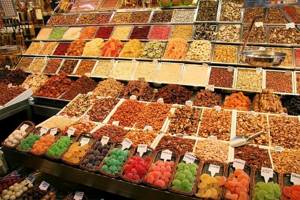
It is quite natural that to preserve dried fruits during transportation, manufacturers treat them with various chemicals. This is why you need to be very careful when choosing what you are going to eat.
Quality dried figs should be a light beige color that can range from cream to light brown. All fruits must be the same size, not too dry to the touch and have a uniform color. If the fruits are slightly flattened, this only speaks in their favor. Don’t be afraid of the white coating on dried figs; it’s just glucose, which remains on the surface after heat treatment of the fruit. It is important to remember that the taste of the fruit should not contain sour or salty notes. Avoid choosing figs that are too dry or rough to the touch. This suggests that its shelf life has long expired.
What are the benefits of dried figs for women?
When preparing for childbirth, during pregnancy in the second and third trimester, it is very important to eat as little industrial sweets as possible, but lean on healthy sweets made from dried fruits and berries. Dried figs perfectly relieve cravings for sweets, and at the same time prevent the appearance of edema. Everyone knows that sweets and baked goods retain water, which often leads to gestosis.

During pregnancy and breastfeeding
The main task of a nursing mother is to feed the baby tasty and satisfying, but not to cause allergies in him. Russian pediatricians do not object to halva (after all, we Russians grew up on sunflower seeds), but Armenian pediatricians have nothing against figs. Still, before eating dried fruit, you should be vigilant and eat one dried fig. If there is no reaction (there are no rashes or spots on the baby’s skin), the dose can be safely increased to 3 pieces at a time. It is still not recommended to eat more than 5 a day.
Fig diet for weight loss
For those who want to lose weight without suffering from hunger and without depleting their body with a lack of nutrients, there is a special fig diet. This diet involves replacing dinner or afternoon snack with figs. Since the calorie content of 1 piece of fig is relatively low, you can afford to eat up to five fruits, thereby receiving many useful substances, but without exceeding your calorie needs.4.5555555555556
4.56 out of 5 (9 Votes)
A berry like fig is loved by many. This is a rather interesting product that can go by different names - fig, fig, wineberry. The peculiarity of figs is that when dried, they do not lose their properties, and even increase them. Therefore, it is often consumed in dry form. But few people know about the calorie content of figs and their KBJU (calories, proteins, fats, carbohydrates) in general.
Figs for men
Men love dry figs and rightly so. It is this dried fruit that has a great effect on their reproductive function. Ancient healers attributed the ability to make sperm alive to the dried berry and literally force-fed figs to princes, on whose conscience lay the continuation of royal dynasties. Back then, dried fruit was expensive, worth its weight in gold; now buying several dried berries costs around 200 rubles.
Men also took decoctions of fig tree fruits for nervous disorders, insomnia, or, if just for the sake of it, as a snack when doing heavy home improvement work. In eastern countries, men wore dried figs in tueskas and ate as soon as the first signs of hunger or fatigue occurred.

Use in cooking
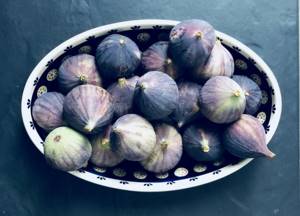
Use in cooking
Fresh fruits are good for canning. The following delicacies are prepared from them:
- jam;
- jams;
- compotes.
Dried figs are often used to prepare baked goods, which acquire a sweet, harmonious, pleasant, delicate taste. Various desserts are prepared with dried and fresh fruits:
- cookie;
- candies;
- marmalade;
- paste;
- cakes;
- gingerbread;
- puddings.
Fish go well with meat and poultry. The fruits are used for stuffing pork, lamb, duck, chicken, and turkey. Fig-based sauces will help highlight the spicy taste of meat dishes.
Fish stuffed with figs acquires an interesting and unusual taste. The smoked fish goes perfectly with fish:
- salmon;
- chum salmon;
- sea bass;
- trout.
Wine berries make delicious fruit and vegetable salads, which include the following additional ingredients:
- bananas;
- pears;
- oranges;
- peaches;
- plums;
- apples;
- tangerines;
- tomatoes;
- beet.
Contraindications to the use of dried figs
Like any dried fruit, dried figs have beneficial properties and contraindications for consumption, which doctors advise you to remember. So, the fruit should not be eaten with the following diagnoses:
- Gout is caused by oxalic acid, which is also found in figs. There is a high probability of exacerbation of attacks.
- For chronic intestinal diseases. Dried fig fruits, like any dried fruits and berries, perfectly improve peristalsis, but sometimes they provoke frequent bowel movements: the fiber slightly distends the intestines, which is why failure can occur completely unpredictably. Do you have problems with your stool? Please consult your doctor before putting delicious figs into your mouth.
- Diabetes mellitus. No, at some stages the fruit will not be prohibited, but again you need to consult a doctor and possible restrictions on the amount of dried berries consumed.
- Under 1 year of age. Figs are unusual for Russian children, and a reaction to the fruit is possible - allergies, redness, rashes. It’s easy to avoid this if you introduce your child to a small piece for the first time by brewing it in compote or milk. Then you can safely give from 3 to 5 pieces per day.
Dried
The calorie content of dried figs is 260 kcal/100 g, which corresponds to the energy value of the product after drying using syrup. The processing process involves pre-cooking the berries in a concentrated sugar solution, followed by drying. This increases their shelf life, but deprives them of a significant portion of vitamins. For this reason, dried figs are considered less healthy, although they can be an excellent alternative to unhealthy sweets and confectionery.
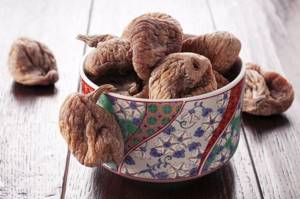
In some cases, the use of dried fig tree is recommended by doctors and nutritionists. Such a product will perfectly help a weakened body recover after illness, gain the necessary kilograms in case of insufficient body weight, or increase performance and energy during heavy physical activity or intense training.
